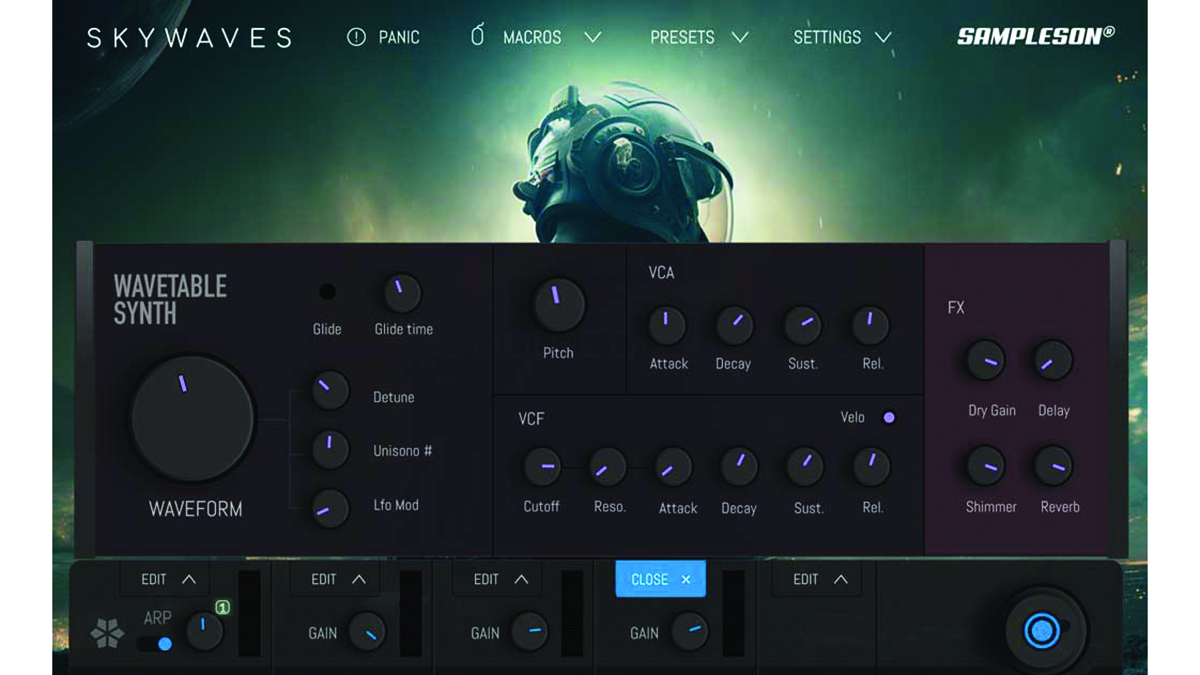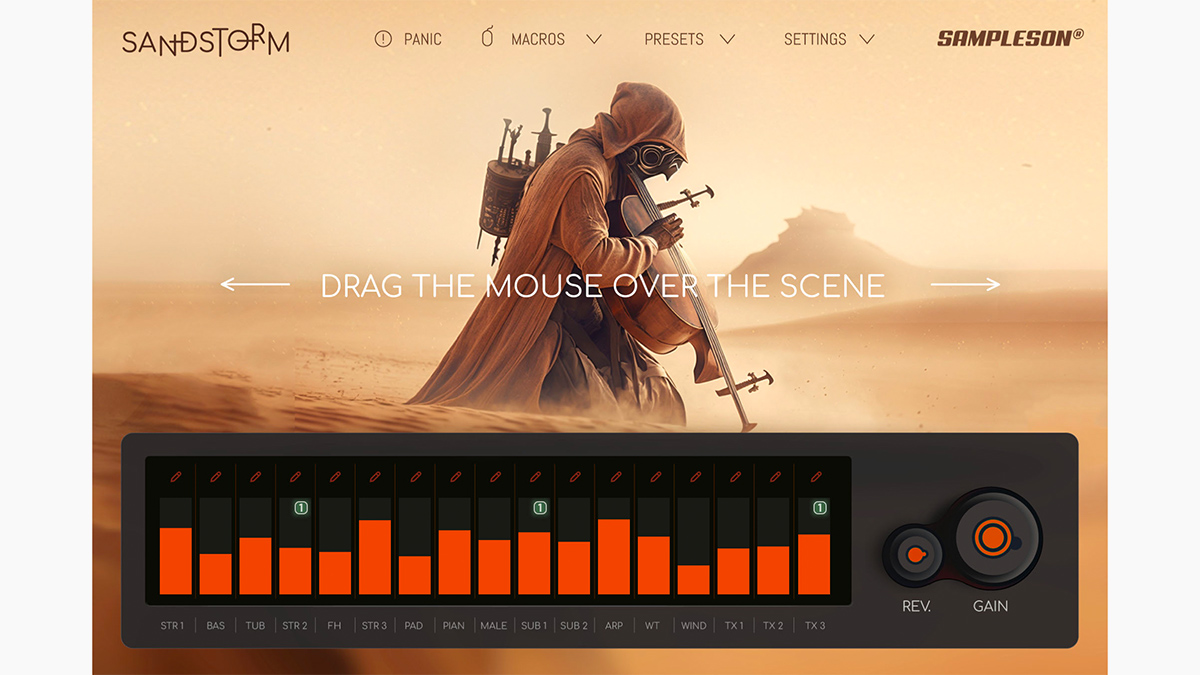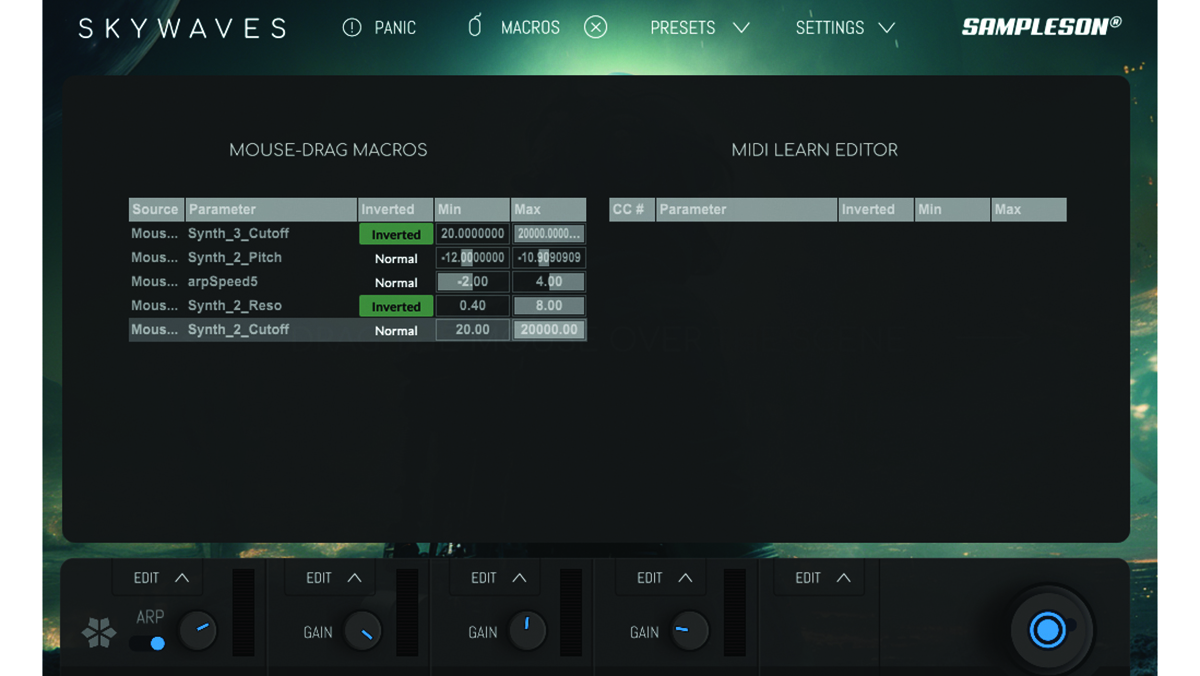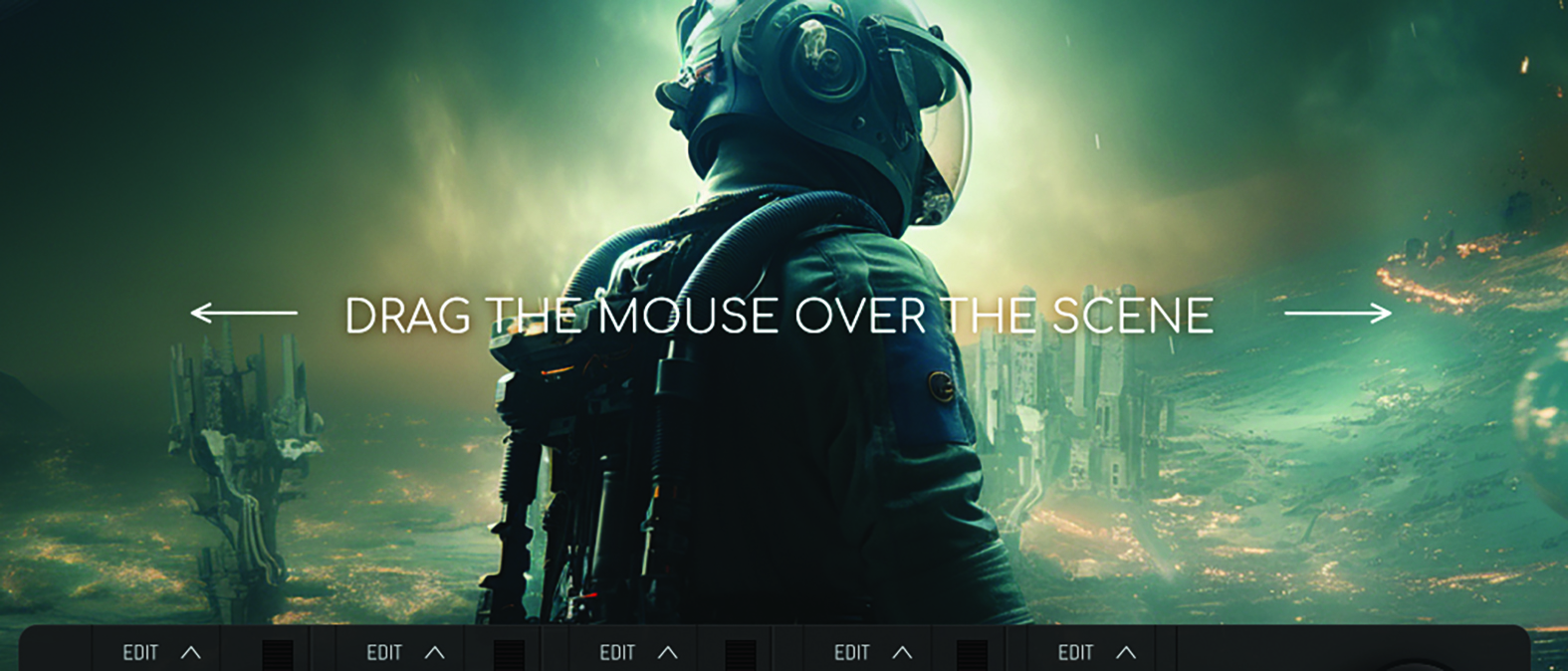MusicRadar Verdict
A versatile instrument with a well-balanced and streamlined combination of features, which makes it easy to lay down musical ideas fast.
Pros
- +
Extremely versatile without overwhelming the user with features.
- +
Macros allow for responsive sound design.
Cons
- -
Mouse-drag control might not suit everyone.
MusicRadar's got your back
Sampleson SkyWaves: What is it?
It can be daunting to sift through orchestral sample libraries with hundreds of different instruments or articulations, in search of the cinematic. And that’s assuming you haven’t been overwhelmed by the incredibly over-saturated market for soundtrack-making tools to begin with.
If you want a break from the sample library-based approach and aren’t looking to emulate the sounds of a classical orchestra, SkyWaves has you covered. It is intended for creating “analogue cinematic soundscapes”, and is available in VST and VST3 format, plus as a standalone application.

Sampleson SkyWaves: Performance and verdict
Consisting of three analogue-modelled synths and a wavetable synth, as well as an effects section and macro panel allowing for finer control, SkyWaves makes it easy to dive in and create impressive sounds in minutes. Looking more closely at the first three synths, we find a VCO section with basic waveforms and detune controls, VCA and VCF sections with ADSR controls, an LFO section, and finally, FX send knobs. This would all be pretty standard stuff, but the first synth also plays host to sophisticated arpeggiator controls, with a visual editor which allows you to change not only the velocity of individual arpeggiator steps, but also their duration.

• Sampleson Sandstorm
SkyWaves’ sister plugin, a soundscape creator with 17 orchestral layers and mouse-drag.
• Spitfire Audio Originals Cinematic Pads
A sound library created from symphonic orchestral recordings captured at AIR Studios, London.
At first glance, it might seem we’re simply looking at four synths packed into a plugin, with a few other features thrown in to increase the appeal. But the key to SkyWaves’ versatility lies in the top half of Skywaves’ interface, where a towering astronaut figure invites you to “drag the mouse over the scene”. Doing so engages SkyWaves’ most dynamic feature, the Macro section (see below), which allows you to modulate practically any of Skywaves’ parameters at the click and drag of your computer mouse.
Right clicking on any parameter allows it to be easily added to or removed from the macro panel or the MIDI CC editor which is also housed in this section. Perhaps the only downside is that there does not appear to be a way of freezing or temporarily deactivating a macro, and depending on your familiarity with using a mouse as MIDI controller, you could encounter difficulties setting up your DAW to capture the changes made with the click-drag function. Additionally, this approach may not be ideal for those who want some distance from the desk-based production process, and makes it harder to envision SkyWaves in a performance setting – though it’s clear that this instrument is not intended primarily for live use.

Macro magic
Being able to morph and evolve sounds on the fly is particularly essential to any soundtracking tool, and SkyWaves’ macro section makes it easy to do just that. You can assign any number of controls to the mouse-drag function – cutoff, pitch, reverb send level, you name it – and modulate them all simultaneously. You can also adjust the range by which individual controls are affected when you click and drag, which means you can vary a sound by a precise increment (useful if you’re controlling a tone-based parameter, such as the pitch), or create sweeping changes that take you soaring from one extreme to another.
You can invert the direction of any macro, which can produce unexpected effects: you can move parameters in opposite directions, such as decreasing a filter’s cutoff point while increasing the resonance, or decreasing the level of one synth while bringing in another. Modulating the effects – for example the shimmer’s pitch shift function – can add further layers of complexity, creating constantly-morphing soundscapes with miniscule variations taking place over milliseconds.
Sky’s the limit
SkyWaves comes with more than 60 presets, which are conveniently categorised into instrument or sound type. There are basic waveforms, arpeggiated synths, sound effects and even a few percussion sounds, including two surprisingly subby kicks. The presets are a great starting place, but it’s worth noting that they just scratch the surface of the more advanced capabilities of this instrument, particularly those that can be achieved with macros. Under the Presets window, you can easily save your patches and even create your own categories under which to organise them. The options to customise and create your own patch libraries makes it easy to feel right at home in SkyWaves’ alien galaxy land.
The options to create your own patch libraries makes it easy to feel right at home in SkyWaves’ alien galaxy
The onboard effects feature a reverb, delay and shimmer, and you can adjust how much of each synth’s signal is sent to each effect. The pitch shift function on the shimmer is particularly impressive, adding an undulating layer of subtle harmonics behind played notes.
Whether making music for short films, commercials or the next Blade Runner, SkyWaves is a great tool for your arsenal which can just as well create deep, earthy basses as vaporous, air-borne synths.
MusicRadar verdict: A versatile instrument with a well-balanced and streamlined combination of features, which makes it easy to lay down musical ideas fast.
Sampleson SkyWaves: Hands-on demos
Sampleson
Sampleson SkyWaves: Specifications
- macOS 10.7 or later. Supported on Apple Silicon (Native) and Intel Macs. Standalone App, VST3 and AU included. Host must support VSTi or AU plugins. 100 MB HDD. 4GB RAM. 64-bit Plugin and Standalone.
- Windows 7 or later. Standalone 64 bits App and VST3 included. Host must support VSTi plugins. 100 MB HDD. 4GB RAM. 64-bit Plugin and Standalone.
- CONTACT: Sampleson
Computer Music magazine is the world’s best selling publication dedicated solely to making great music with your Mac or PC computer. Each issue it brings its lucky readers the best in cutting-edge tutorials, need-to-know, expert software reviews and even all the tools you actually need to make great music today, courtesy of our legendary CM Plugin Suite.
“A synthesizer that is both easy to use and fun to play whilst maintaining a decent degree of programming depth and flexibility”: PWM Mantis review
“I feel like that song had everything we needed to come back with”: Bring Me The Horizon’s Lee Malia on Shadow Moses, its riff and the secrets behind its tone, and why it was the right anthem at the right time
“I said, ‘Are we sure we can write a song about death?’”: The story of Mike + The Mechanics' classic No.1 The Living Years











